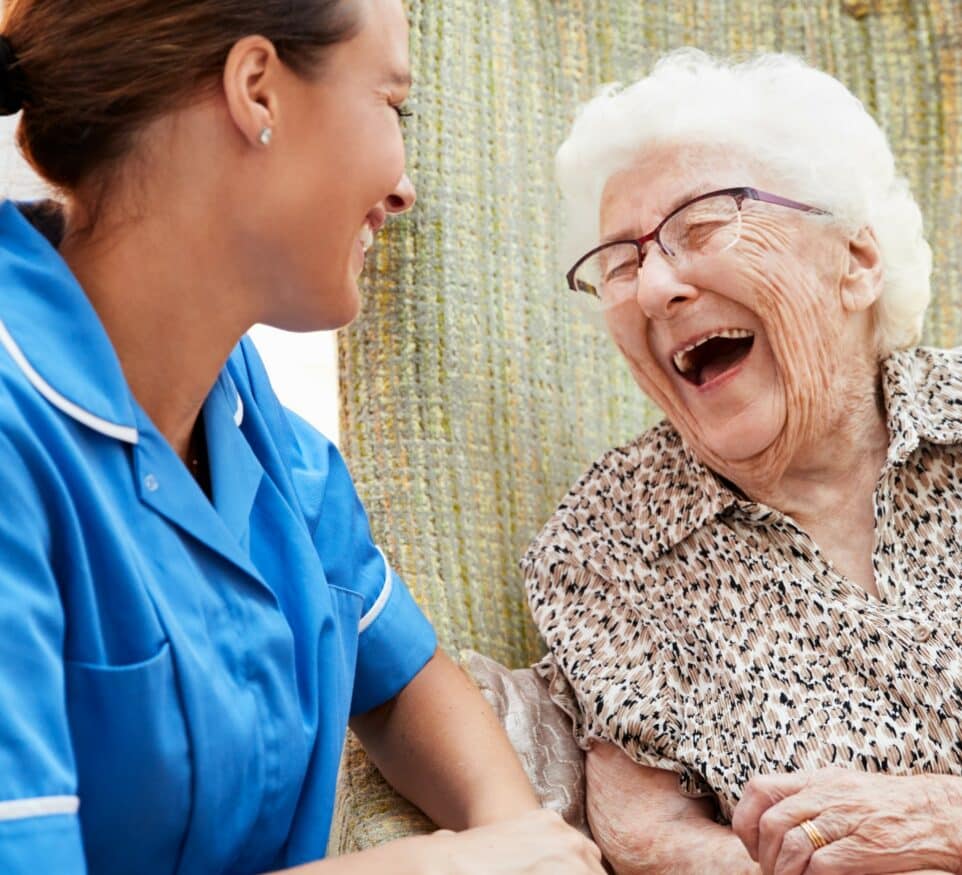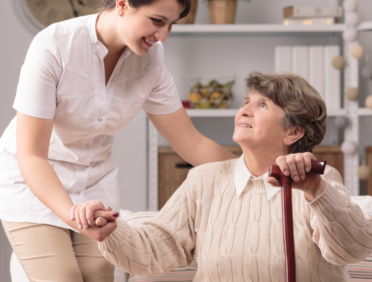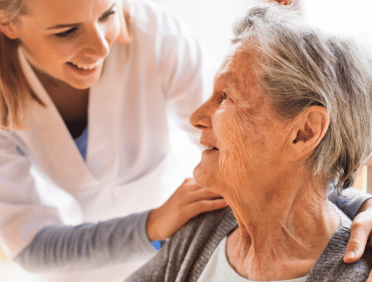Consistently placing a high priority on the health and well-being of its people, the United Kingdom has mandated that they receive medical care. As the population continues to age and the requirements for healthcare become more complex, the significance of laws that implement mandated care is only going to grow.
These policies ensure that vulnerable people receive the necessary care and support, thereby protecting the quality of life for those populations.
The Challenges
Even though there are still problems that need to be fixed, the most important thing is to maintain a consistent commitment to providing all individuals with treatment that is both fair and comprehensive.
The United Kingdom has the ability to improve the overall health outcomes of its population by utilising technology and placing an emphasis on preventative measures. This will allow the country to boost its required care services.
Historical Context
Mandatory care first emerged in the UK in 1948 with the founding of the National Health Service (NHS). Founded on the ideas of offering healthcare free at the point of use, based on need rather than capacity to pay, the NHS At the time, this was a novel idea and laid the groundwork for required care programmes.
Reflecting the changing demands of the population, the NHS has over the years added mandated immunisations, mental health support, and elder care.
Current Mandatory Care Services
These days, the United Kingdom’s mandatory care services encompass a diverse array of provisions. Examples of these include childhood immunisations, which are crucial for the prevention of the transmission of infectious diseases.
Regular physical examinations and check-ups are also required in order to ensure early detection and treatment of conditions like diabetes and cancer.
Mental health services are a critical component of mandatory treatment, offering assistance to individuals who are afflicted with conditions such as anxiety and depression.
The provision of these services is essential for the preservation of public health and the prevention of more severe health issues in the future.
Challenges and Criticisms
Notwithstanding the all-encompassing character of required care services, there are major obstacles and objections. The strain on NHS resources is one main problem that usually results in long treatment waiting times. The system is under great strain from growing demand for healthcare services and financial restrictions.
Critics contend that more money is required to make sure mandatory care programmes can efficiently satisfy population demands. Given that certain areas receive better service than others, concerns have been raised about the fairness of access to these resources.
The Role of Technology
The efficiency and effectiveness of the required care services depend heavily on technology. Mobile health apps, telemedicine, and electronic health records have transformed the management and delivery of treatment.
Particularly for people in remote or underprivileged areas, these developments have enhanced patient access to healthcare services. Telemedicine, for example, lets people see doctors without having to travel, therefore facilitating quick access to treatment.
Mobile health apps also let people more successfully follow treatment plans and keep an eye on their medical conditions.
Future Directions
Looking ahead, mandated care in the UK will probably incorporate more attention to preventive care and more incorporation of technology. Dealing with health problems early on can save lives and lower healthcare expenses, as is becoming increasingly clear.
Policymakers, healthcare providers, and the public will have to work together closely to encourage good living and frequent health inspections. Making sure that everyone has the chance to lead a healthy life also depends critically on addressing the social factors of health, including housing, education, and employment.
Frequently Asked Questions (FAQs)
Healthcare professionals are required to complete mandatory care training, which includes courses that are essential for ensuring that they have the requisite skills and knowledge to provide safe and effective care.
This training is essential for all healthcare professionals, including doctors, nurses, carers, and support personnel, in order to adhere to legal and professional standards. This form of training is essential for the preservation of high-quality patient care and safety.
Mandatory care training is required for healthcare professionals in a variety of contexts, environments, care homes, and community care environments. Not only are new employees involved in this training, but current employees are also encouraged to maintain their skills and knowledge.
As part of their dedication to regulatory compliance and patient safety, employers are accountable for guaranteeing that their employees complete mandatory training.
Mandatory care training is necessary due to both ethical and legal obligations. The Care Quality Commission (CQC) and other regulatory bodies require that healthcare personnel receive sufficient training to fulfil their responsibilities in a safe and competent manner.
Healthcare providers are incapable of providing adequate care without this instruction and risk non-compliance, which can lead to penalties and affect their operational status.
Assuring that all personnel participate in mandatory care training also promotes a culture of professional development and continuous improvement within healthcare organisations. Employers can improve the quality of care they provide to patients and decrease the probability of errors or incidents by prioritising this training.
Essential topics that are included in mandatory care training in the United Kingdom are intended to guarantee the safety and welfare of patients. Manual handling, fundamental life support, infection prevention and control, health and safety, and safeguarding adults and children are frequently included as key components.
Each element is essential for providing healthcare professionals with the necessary preparation for a range of possible situations.
All staff members are guaranteed the ability to safeguard vulnerable individuals through safeguarding training, which includes the identification and reporting of abuse and neglect. Infection prevention and control training is essential for the safety of both patients and personnel in healthcare settings, as it is designed to prevent the transmission of infections.
All employees are guaranteed that they comprehend workplace hazards and are aware of how to mitigate them in order to prevent accidents through health and safety training.
Manual handling instruction imparts the appropriate methods for lifting and transporting patients, thereby mitigating the likelihood of injury to both patients and staff. The basic life support training programme provides healthcare professionals with the necessary skills to respond effectively in emergency situations, including cardiac arrests.
These components are frequently supplemented with supplementary training that is tailored to the specific requirements of specific positions or environments.
As a whole, these critical elements are intended to establish a healthcare environment that is compliant, efficient, and secure. Regular updates and remedial courses guarantee that healthcare professionals are informed about the most recent regulations and practices.
Regular updates or renewals of mandatory care training are necessary to guarantee that healthcare professionals are up-to-date on the most recent regulations and practices. Typically, the majority of mandatory care training courses require annual refresher training, although some components may have distinct renewal periods.
Employers should adhere to the specific guidelines established by regulatory bodies, including the CQC and other professional organisations.
Due to the frequent modifications in best practices and guidelines, it is advisable to conduct annual updates for training areas such as infection control, basic life support, and manual handling.
Safeguarding training may also necessitate annual renewal to remain current with the latest policies and procedures for safeguarding vulnerable individuals. Healthcare providers must establish a reliable system to monitor the expiration dates of their training and schedule renewals accordingly.
The renewal period may differ for certain specialised training. For instance, advanced life support certifications may be valid for a period of two to three years, contingent upon the guidelines of the issuing authority. It is imperative that employers remain apprised about the precise requirements for each type of training that their employees participate in.
The maintenance of high standards of care and compliance with legal requirements necessitates the regular updating of mandatory care training. Also, it encourages a culture of continuous professional development and learning among healthcare professionals.
The United Kingdom has legal obligations regarding mandatory care instruction. Healthcare providers are required to adhere to a variety of regulations and standards established by professional organisations, the Health and Safety Executive (HSE), and the Care Quality Commission (CQC).
These regulations guarantee that all healthcare personnel are adequately trained to perform their responsibilities in a safe and competent manner.
Under the Health and Social Care Act 2008, healthcare providers are required to guarantee that their personnel receive the necessary training to satisfy the fundamental quality and safety standards. The CQC conducts inspections of healthcare services to guarantee that they adhere to these standards.
Noncompliance may result in enforcement actions, such as service closures, restrictions, or fines.
The Management of Health and Safety at Work Regulations 1999 mandate that employers offer health and safety training to their employees, which includes instruction in infection control and manual handling. The objective of these regulations is to safeguard patients and employees from workplace injuries and foster a secure work environment.
Continuing professional development and mandatory training are also specific requirements for professional entities, including the General Medical Council (GMC) and the Nursing and Midwifery Council (NMC). Healthcare practitioners must abide by these rules in order to maintain their registration and conduct their business legally.
Patients are safeguarded, and healthcare providers are spared from financial and legal penalties by adhering to these legal obligations. Regular audits and training updates are necessary to make sure that one is adhering to the most recent laws and standards.
Businesses and individuals in the healthcare sector can derive numerous advantages from completing mandatory care training. It bolsters the professional competence and confidence of individuals by ensuring that they have the necessary skills and knowledge to deliver high-quality care.
Businesses benefit from it because it ensures compliance with legal and regulatory requirements, improves the organisation’s reputation, and advances patient safety.
As it serves as an indication of their dedication to professional development, mandatory care training may facilitate career advancement opportunities for individuals. This provides them with the most recent information on healthcare techniques, legal requirements, and best practices.
This training also contributes to the enhancement of patient safety and outcomes by reducing the risk of errors and incidents.
Businesses can ensure that their personnel are competent and in compliance with industry standards by implementing mandatory care training. Compliance with this requirement is essential for the preservation of a positive reputation in the healthcare community and the avoidance of penalties from regulatory bodies such as the CQC.
Staff members who are adequately trained are more inclined to deliver exceptional care, which results in increased patient satisfaction and a decrease in the number of complaints.
Investing in mandatory care training cultivates a professional development and continuous improvement culture within the organisation. It has the potential to enhance staff morale and retention by illustrating the employer’s dedication to their professional growth.
In the end, this training enhances the overall efficiency and efficacy of healthcare services, which is advantageous to both the organisation and the patients it serves.
Locating mandatory care training providers that are accredited in the United Kingdom, such as Learn Q, is crucial for guaranteeing the quality and recognition of the training that is received. Also, professional organisations such as the General Medical Council (GMC) and the Nursing and Midwifery Council (NMC) may offer suggestions.
Another useful strategy is to solicit referrals from colleagues in the same business or via professional networks. The experiences of colleagues and other healthcare professionals can provide significant insights about credible training providers.
These insights can be based on the experiences of individuals. Another effective tool for evaluating the quality of training providers is the utilisation of online reviews and testimonials.
Confirming the credentials and accreditation status of a training provider, such as Learn Q, is an essential step in the selection process. Make sure to confirm the provider’s recognition by the relevant professional and regulatory organisations.
There is a higher chance that the healthcare sector will accept the training more favourably.
The duration of a typical mandatory care training course can fluctuate based on the specific subject matter and the profundity of the content that is covered. These courses typically last from a few hours to a full day, depending on the specific subject matter.
For example, a fundamental life support course may require 2–4 hours to complete, whereas a comprehensive health and safety course may take a full day.
Mandatory care training may span several days or even weeks in certain instances, particularly when it involves the integration of multiple topics into a single training programme or for more complex subjects.
For instance, a multi-day course may encompass infection control, safeguarding, and manual handling in tandem, thereby offering a more comprehensive approach to mandatory training.
Online mandatory care training courses frequently provide a degree of flexibility in terms of their duration. Module completion is subject to the learner’s schedule and the complexity of the material, and it may take anywhere from a few hours to several days.
This adaptability can be especially advantageous for healthcare professionals who are exceptionally busy and must accommodate their training schedules with their professional obligations.
Therefore, it is crucial for both individuals and organisations to allocate an adequate amount of time for mandatory care training in order to guarantee compliance with regulatory requirements and a thorough comprehension of the material.
Appropriate scheduling and planning can facilitate the seamless integration of training into the workflow without compromising patient care.
Regulatory bodies in the United Kingdom acknowledge online mandatory care training courses that satisfy specific accreditation standards and requirements. Regulatory organisations like the Care Quality Commission (CQC) and Skills for Care acknowledge the validity of online training, especially when it comes from reputable and accredited training providers.
The flexibility and accessibility of online training have contributed to its increasing popularity.
Online training providers must abide by the same rigorous standards as traditional in-person training in order to guarantee recognition. This comprises interactive components, comprehensive content, and assessments to confirm comprehension and proficiency.
Accreditation from reputable awarding bodies, such as the Institute of Leadership and Management (ILM) or City & Guilds, reinforces the credibility and quality of online courses.
Healthcare organisations should confirm the accreditation status of online training providers prior to enrolling their personnel. Making sure the online training material complies with current laws and industry best practices, as well as the particular requirements of the job, is also essential.
Upon completion, numerous online courses provide certification, which can be employed to demonstrate conformance during inspections or audits.
Healthcare professionals can maintain their proficiency and expertise by participating in online mandatory care training, which is both efficient and convenient.
When selected with care, these courses offer a viable alternative to conventional classroom-based training, guaranteeing that employees remain competent and in compliance with regulatory standards.
Training regarding mandatory care may be tailored to accommodate the unique requirements of your organisation. The content of training programmes is relevant and directly applicable to the duties and responsibilities of your staff when they are customised to meet the unique requirements of your workplace.
Learning outcomes can be improved, and the overall efficacy of the training programme can be improved through customised training.
Adapting the curriculum to incorporate specific policies, procedures, and circumstances that are pertinent to your organisation is the process of customising mandatory care training.
For instance, a care facility may necessitate additional training in dementia care, whereas a hospital may place a greater emphasis on advanced life support techniques.
Work with a training provider that provides customised training solutions to integrate these specific requirements into the training programme.
The customisation procedure is dependent on the participation of critical stakeholders. Valuable insights into the areas that require additional training or emphasis can be obtained from managers, supervisors, and frontline staff.
Using this collaborative approach guarantees that the training is thorough and covers all critical aspects of care that are unique to your organisation.
Customised training also enables the flexibility of delivery methods and scheduling. Depending on the preferences of your employees, training can be conducted on-site, online, or through a blended approach.
This adaptability fosters the seamless integration of training into the daily operations of your organisation, ensuring that patient care remains uninterrupted.
Healthcare providers may incur substantial penalties for failing to comply with mandatory care training regulations. Organisations that neglect to satisfy training obligations are subject to enforcement actions by regulatory bodies, including the Care Quality Commission (CQC). In severe instances, penalties may include the closure of the facility, restrictions on services, or fines.
A higher risk of patient injury can result from noncompliance with mandatory training requirements, which can lead to legal actions and financial obligations. In the event that inadequate training results in negligence or substandard care, organisations may be subject to lawsuits from patients or their families.
Substantial financial settlements and harm to the organisation’s reputation may be the consequences of such legal actions.
Non-compliance can also have a detrimental effect on the organisation’s reputation and ratings. Poor inspection results from the CQC can undermine public confidence and discourage prospective patients or clients from utilising the services. This can result in a loss of revenue and business, which can further exacerbate the financial consequences of noncompliance.
Healthcare providers must establish robust compliance monitoring systems and training programmes to prevent these penalties. Maintaining precise training records, conducting routine audits, and enrolling in refresher courses can guarantee that all personnel are current with their mandatory training obligations and that the organisation remains in compliance with regulations.
You must adopt a proactive approach to guarantee that your mandatory care training is in accordance with the most recent legislation. Making sure that training materials are consistently reviewed and updated to align with the most recent laws, regulations, and best practices is imperative.
The Health and Safety Executive (HSE), the Care Quality Commission (CQC), and professional associations like the Nursing and Midwifery Council (NMC) are a few examples of official regulatory bodies that can help with this.
You can stay informed about changes in legislation and new guidelines by subscribing to updates from these regulatory bodies or via the Learn Q blog. Another effective method for staying informed about the most recent advancements in mandatory care training is to participate in industry conferences, seminars, and webinars.
Networking with other professionals in the field can also offer valuable insights and the opportunity to share best practices.
Working with accredited training providers who consistently update their courses to ensure compliance with current legislation is essential. Monitoring regulatory changes and integrating them into their training programmes is frequently the responsibility of these providers’ expert teams.
The selection of a training provider that is both accredited and reputable guarantees that your employees will receive training that adheres to the most recent standards.
Ensuring that training completion and renewal dates are monitored is also crucial. Compliance breaches can be identified, and all staff members can be guaranteed that they have completed their mandatory care training through routine audits and assessments.
Healthcare organisations can ensure that they comply with current legislation and provide exceptional care by following these procedures.
Healthcare professionals are typically required to complete mandatory care training, which encompasses a variety of critical subjects that are intended to guarantee patient safety and high-quality care. Basic life support, infection prevention and control, health and safety, manual handling, and safeguarding adults and children are among the primary areas of focus.
Regulatory bodies have mandated these subjects because they are crucial to healthcare professionals’ daily tasks.
Healthcare professionals undergo safeguarding training to learn how to recognise and respond to indicators of neglect or abuse, thereby guaranteeing the safety of vulnerable individuals. Training in infection prevention and control is essential for the preservation of of a secure environment for both patients and staff, as it involves the implementation of practices that prevent the transmission of infections within healthcare environments.
Health and safety training guarantees that healthcare professionals comprehend workplace hazards and are aware of how to reduce risks.
Training in manual handling teaches staff and patients how to lift and move patients safely, thereby preventing injuries. Healthcare professionals are equipped with the necessary skills to respond effectively in emergency situations, including cardiac arrests and respiratory failures, through basic life support training.
These fundamental topics are frequently supplemented with supplementary training that is pertinent to particular roles or environments.
Medication management, fire safety, equality and diversity, and data protection are additional subjects that may be incorporated into mandatory care training.
The mandatory care training programme guarantees that healthcare professionals are adequately equipped to deliver safe, effective, and compliant patient care by addressing these comprehensive topics.
Financial assistance and funding are available for mandatory care training in the United Kingdom. There are numerous funding sources available to assist individuals and organisations in covering the expenses associated with training programmes.
Bursaries, apprenticeships, and government grants are among the financial assistance options that are available to alleviate the financial burden of mandatory care training.
Health Education England (HEE) and Skills for Care are among the government grants and funding programmes that offer financial assistance for the training and development of healthcare professionals.
The objectives of these programmes are to improve the skills and competencies of healthcare professionals and guarantee the provision of high-quality care. Organisations are eligible to apply for these grants in order to subsidise the expenses associated with mandatory training for their personnel.
Another valuable source of funding is apprenticeships. The UK government implemented the apprenticeship levy, which allocates funds to employers to facilitate the training and development of their personnel through apprenticeship programmes. Healthcare apprenticeships encompass a broad spectrum of responsibilities and may constitute mandatory care training as part of the curriculum.
Scholarships and bursaries are also available from charitable organisations and professional bodies to assist in the financing of mandatory care training. Specific groups, such as nursing students or healthcare personnel employed in underserved regions, are frequently the recipients of these financial aids.
Individuals and organisations can obtain the resources required to complete mandatory care training without financial burden by investigating these funding options.
The verification of the certification of a mandatory care training course entails the examination of numerous critical factors to guarantee that the training is credible and recognised.
Check first and foremost to see if the training provider has accreditation from reputable organisations like the Institute of Leadership and Management (ILM), City & Guilds, or other recognisable awarding bodies. Training that is accredited adheres to established standards of relevance and quality.
Another crucial step is to confirm that the training course has received approval from the relevant regulatory bodies, such as the Care Quality Commission (CQC) or Skills for Care. These organisations frequently maintain lists of authorised training providers and courses that satisfy their rigorous standards. These organisations verify that the training is acceptable for examinations and audits.
Verifying the certification can also be done by looking up the training provider’s credentials and accreditation proof on the internet or the provider’s website. Reputable providers should be capable of furnishing documentation or references that verify their status.
Also, reviewing online testimonials and evaluations from other healthcare professionals can provide insight into the training’s effectiveness and quality.
Finally, guarantee that the certification contains pertinent information, including the course title, date of completion, and the name of the accrediting body. The accuracy of training records and the demonstration of compliance with regulatory requirements are contingent upon this information.
You can confidently verify the certification of a mandatory care training course by adhering to these steps.
Mandatory care training and recommended training serve distinct purposes in the healthcare sector. Mandatory care training is mandatory for all relevant healthcare personnel to adhere to the essential standards mandated by regulatory bodies or the law.
This training focuses on critical areas, including safeguarding, infection control, health and safety, and basic life support, which are essential for the quality of patient care and patient safety.
Conversely, healthcare professionals are strongly encouraged to participate in recommended training, which, although not legally mandated, is highly recommended for the purpose of improving their skills and knowledge. Specialised courses on subjects such as advanced life support, dementia care, mental health awareness, and leadership development may be recommended.
These courses are intended to supplement mandatory training and offer supplementary knowledge that can enhance the quality of care as a whole.
Compliance with regulatory requirements and the prevention of penalties necessitate mandatory care training. The risk of errors and incidents is mitigated by ensuring that all healthcare personnel possess a fundamental level of proficiency in critical areas.
Employers are required to render this training in order to adhere to the laws and regulations established by organisations such as the Care Quality Commission (CQC).
Conversely, healthcare professionals who are motivated to advance their careers or organisations that are striving to surpass fundamental compliance standards frequently pursue recommended training on a voluntary basis. Recommended training can result in enhanced patient outcomes, increased staff satisfaction, and a more trained workforce, despite the fact that it is not mandatory.
Both kinds of training are crucial; however, they fulfil distinct functions in the competency and growth of healthcare professionals.
Assuming that the certification remains valid and acknowledged by the new employer, it is permissible to transfer your mandatory care training certification. The majority of mandatory care training certifications are transferable on the condition that they are current and issued by accredited providers.
Keeping records of your training certificates and guaranteeing that they are current is crucial.
Present your training certificates to your new employer for verification upon commencing employment. The new employer may mandate that you complete supplementary training that is distinct from their policies and procedures or update specific courses if they are approaching their expiration date.
It is possible to expedite this process by maintaining a personal record of all completed training.
Make sure you find out from your new employer if they have any additional, organisation-specific mandatory training requirements. Some employers may have additional or specialised requirements based on their specific services and patient population, despite the fact that the core components of mandatory care training are generally consistent across the healthcare sector.
The transfer of your mandatory care training certification is a testament to your dedication to professional development and adherence to regulatory standards. It also facilitates a seamless transition to your new position, enabling you to continue delivering high-quality care without any interruption.
Compulsory care training substantially enhances patient safety and quality of care by guaranteeing that healthcare professionals possess the necessary skills and knowledge to effectively fulfil their responsibilities. Infection control, safeguarding, health and safety, and basic life support are critical components of a secure and safe healthcare environment. This training addresses these critical areas.
For instance, infection control training serves to mitigate the transmission of infections within healthcare environments, safeguarding both patients and personnel from potential outbreaks. Safeguarding training empowers healthcare professionals to identify and respond to indicators of neglect or abuse, guaranteeing that vulnerable individuals receive the necessary protection and care.
Health and safety training mitigates the likelihood of workplace accidents, thereby establishing a secure environment for all.
Mandatory care training guarantees that all personnel comply with established protocols and optimal practices by offering consistent and thorough instruction. This consistency reduces the likelihood of errors and reduces the variability in the delivery of care.
Healthcare professionals remain informed about the most recent guidelines and practices through regular updates and remedial courses, which in turn improve the quality of care and patient outcomes.
Overall, mandatory care training cultivates a culture of continuous refinement, competence, and safety within healthcare organisations. It enables healthcare professionals to provide high-quality care, respond effectively to emergencies, and maintain compliance with regulatory standards, thereby benefiting patients and the entire healthcare system.
Variable levels of staff engagement, schedule constraints, and the necessity to ensure that the training is in accordance with current legislation are among the most prevalent obstacles encountered during mandatory care training.
Tackling these issues is critical to ensuring the efficacy of the training programme and adherence to legal mandates.
Healthcare professionals frequently maintain demanding schedules that render it challenging to allocate time for training, which poses a substantial obstacle. Organisations may provide adaptable training alternatives, including blended learning models that integrate in-person and online instruction.
These alternatives enable employees to complete training at their own pace and discretion, thereby reducing the number of interruptions to their workdays.
Staff engagement levels can also influence the efficacy of mandatory care training. Rather than an opportunity for professional development, certain staff members may perceive training as a routine requirement. Organisations can improve engagement by integrating interactive elements, real-life scenarios, and practical exercises into their training.
Highlighting the significance of training for career advancement and patient safety, as well as offering incentives for its completion, can also serve to motivate personnel.
Ensuring that training content is in accordance with current legislation and best practices is an additional obstacle. This issue can be mitigated by conducting routine reviews and updates of training materials, collaborating with accredited training providers, and subscribing to regulatory body updates.
A comprehensive monitoring system that monitors training completion and renewal dates guarantees that all personnel remain in compliance with mandatory training requirements.
Taking on these issues will allow healthcare organisations to develop a mandated care training programme that is not only effective and efficient but also satisfies regulatory criteria and improves the knowledge and abilities of their staff.
The United Kingdom has a limited number of exemptions for mandated care training requirements, and these exemptions are typically only granted in exceptional situations.
It is standard practice for all healthcare workers to be required to undergo mandatory training to ensure that they are capable of performing their duties in a safe and effective manner.
Nevertheless, there are circumstances that may call for temporary or partial exemptions, which have to be clearly recorded and explained wherever possible.
Upon joining a new organisation, for instance, newly employed employees who have recently obtained and are still valid training certifications from their prior employers could be excluded from the requirement to retake those particular courses.
When this occurs, the new employer is responsible for confirming the correctness and applicability of the previous training and ensuring that it is up-to-date with the standards that are now in place. Immediate action should be taken to correct any training deficiencies.
Healthcare workers who have been absent for an extended period of time, such as for maternity leave or long-term sick leave, may also be eligible for exemptions. A risk assessment ought to be carried out upon their return in order to ascertain whether components of the obligatory training need to be updated or reviewed.
There is the possibility of granting temporary exemptions during this period of transition, provided that a well-defined plan is in place to finish any training that may be required.
Healthcare organisations need to have clear policies in place regarding exemptions and ensure that any exemptions they grant do not jeopardise patient safety or regulatory compliance.
Audits and evaluations conducted on a regular basis can assist in locating any training deficiencies and guarantee that all employees are kept up to date with the mandatory care training standards.
Through the implementation of a comprehensive training management system, companies are able to monitor and manage the compliance of their staff with mandated care training. With the assistance of these systems, organisations are able to monitor the completion of training, the dates of renewal, and compliance with regulatory requirements.
The use of a centralised platform has the potential to simplify the tracking procedure and guarantee that all employees are current with their training.
An effective training management system should incorporate automated reminders for forthcoming training renewals, detailed reporting capabilities, and easy access to training records.
Managers can remain informed about the training status of their staff and take prompt action to resolve any gaps by utilising these features. Integrating the training management system with other HR and compliance tools can further improve efficiency.
Regular audits and evaluations are indispensable for guaranteeing that mandatory training requirements are consistently met. Training records can be compared to regulatory standards, and any discrepancies or areas that require refinement can be identified by conducting periodic checks. These audits also offer the chance to revise training materials to ensure that they align with the most recent guidelines and best practices.
Staff involvement in the instruction process is also essential. Compliance can be improved by fostering a culture of continuous learning and emphasising the significance of mandatory training for professional development and patient safety.
Healthcare professionals’ schedules are diverse, and offering flexible training options, such as online courses and blended learning, can facilitate the completion of their required training.
















